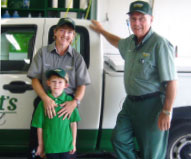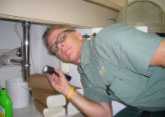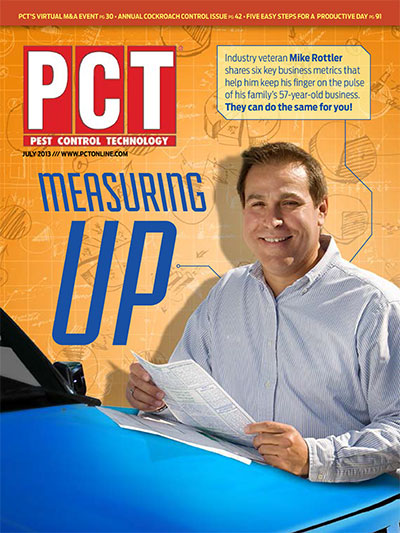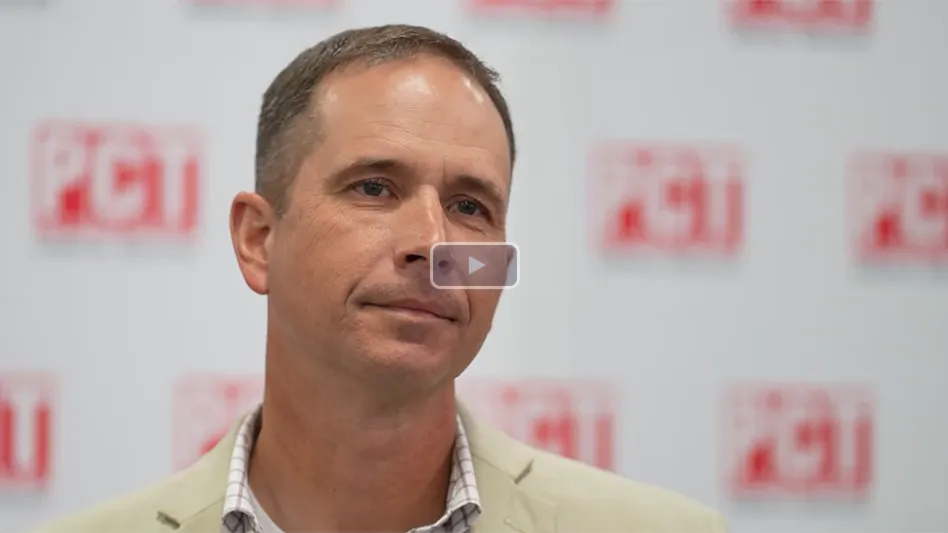 Stacy O’Reilly and her son, William, and her father, John O’Reilly. |
Employees are the foundation of a company’s success. Your growth, reputation and productivity are all tied to employee performance and commitment. In the decade I’ve been running Plunkett’s Pest Control, I’ve learned that when you have the right people in place and when you give them the right tools, this job is a piece of cake. But having the wrong people in place can wreak havoc.
Every significant mistake I have made with my business has centered around a poor personnel decision. I tend to like every person I interview, and once we hire people, I get to know and like them even more. So, I’ve often held on to underperforming employees for too long. Inevitably this results in a bad situation — productivity levels are compromised, customers become dissatisfied, the employee grows increasingly unhappy, and morale nosedives as coworkers question why they themselves continue to work so hard when an underperformer reaps the same rewards.
 Plunkett's goes to great lengths to find the “right people.” |
Human Nature.
It’s natural to want to stick with people you know and like, especially when you’re familiar with their family situation. But the simple truth always emerges: keeping the wrong person in a job isn’t good for anyone — not for you, not for his or her coworkers, and not for your customers.
How do I define “the wrong person?” It may be someone who isn’t committed to pest management; who doesn’t have a strong worth ethic; or who clashes with your corporate culture. How, then, to find “the right people?” That is perhaps the eternal question.
When my father ran Plunkett’s, he did the hiring himself. He was a no-nonsense employer — he set clear direction for the company and was unyielding in his expectations of employees. The culture he built was one of consistent dedication to customers. If an employee didn’t fit into the culture, he was quick to cut the tie. That policy brought him a solid core of loyal employees who worked hard, satisfied customers and produced a strong bottom line.
I am not my father — in fact, one of the funniest moments in our relationship occurred when he asked me, a year or so after I had taken the reins here, if my Dartmouth MBA had prepared me to run the business. My reply was, “It taught me 10 times what I need to know about financials, but only one-tenth of what I need to know about people.” Today, I still know only a fraction of what I’d like to know about people. That hasn’t stopped me from tackling personnel issues, though.
What follows are some measures we’ve put into place to improve our personnel efforts at Plunkett’s.
 "The right people" |
We trust our hiring decisions to our human resources manager. We seek input from several members of our team — including the candidate’s potential supervisor — but our final hiring decisions are made by our experienced HR manager. Why? Objectivity. When a supervisor has a spot to fill, the sense of urgency can (understandably) influence his or her judgment. Our HR manager is more likely to hold out for the ideal candidate, which benefits us in the long term.
We fire jointly. We don’t terminate an employee for one bad day or because one person on the team feels it’s warranted. Letting an employee go is a weighty decision — one that we make only after considerable thought and discussion.
We take candidates out on the job before we offer them a position. Ride-alongs offer a great opportunity for candidates to understand the responsibilities of their potential job and determine if it feels like the right fit. And it allows us to gain more insight into their level of engagement with this line of work.
We respect and support our employees. Plunkett’s technicians enjoy great flexibility in that they work from their homes and have a significant measure of control over their routes. We offer them the opportunity to make their own schedules (with the requirement that they accommodate their customers’ schedules), and we give them the tools they need to provide outstanding service.
We also survey our employees twice per year — once during peak season, in August, and once in February, when business is slower and paychecks are smaller — to find out what’s making them happy on the job and what’s challenging. We take their feedback to heart and act on it, doing everything in our power to make their work lives better.
We train, and train some more. Ongoing development is a trademark of Plunkett’s. We have an expert training team, covering every aspect of the job — pests, customer service, safety, driving, route planning, organization and more — with every employee, whether an incoming hire or a 30-year veteran, if you’re a Plunkett’s employee, you keep growing.
My advice to other business leaders is, above all, be choosy. Involve the most trusted members of your team in hiring decisions, and look for candidates with integrity and genuine interest in the job. These are the people who will keep your customers happy and your bottom line strong. Having the right people on your team will help your business flourish.
As told to PCT contributor Donna DeFranco

Explore the July 2013 Issue
Check out more from this issue and find you next story to read.
Latest from Pest Control Technology
- Eco Serve Pest Services Finalist in Buffalo Business 2024 Best Places to Work
- Los Angeles Ranks No. 1 on Terminix's Top 50 Mosquito Cities
- Tick Talk: Treating for and Communicating About Ticks
- When it Comes to Employee Recruiting Websites, PCOs Prefer Indeed
- Natura Pest Control: A Family Trifecta
- The Ants Go Marching One by One
- Meet the Brown Marmorated Stink Bug
- Target Specialty Products, BASF Team Up for April 25 Cockroach Webinar





